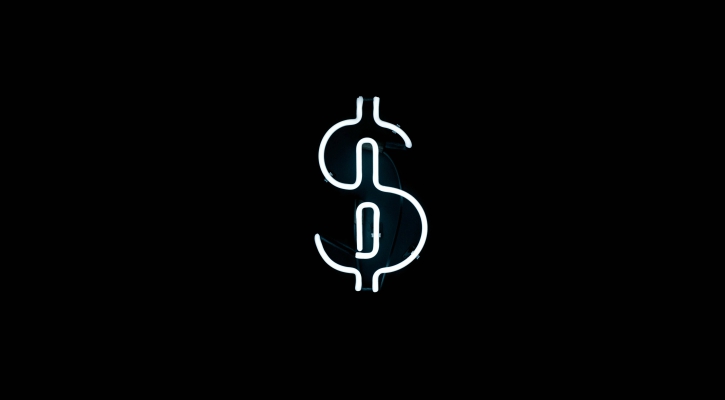How much does it cost to have a baby in Canada
Find out how much does it cost to have a baby in Canada, including hospital fees, health insurance and other expenses.

There are a lot of reasons to consider Canada as a potential new home. The Great White North has some of the most affordable higher education in the world, free universal healthcare and Justin Trudeau, rumored to be the best looking Prime Minister on the planet. It’s no wonder that, following the 2016 US presidential election, Canada’s immigration website crashed from a sudden flood of traffic.
If you’ve decided to take the leap and move to Canada, congratulations! Now for the hard part: saving money while moving your entire life across international borders. Read on for some tips and tricks that will help you save as much as possible during a move to Canada.

Sure, you can hire movers to pack and transport all your belongings. But for a move across borders, that’s likely to cost thousands. Instead, do your packing yourself. Enlist friends and family to help. Minimize the time this will take by only packing what you really need to move, and sell the rest.

Getting rid of all your stuff can be one of the most freeing things you can do. Keep in mind that most of your things are replaceable once you finish your move. Pick out the things you know you want to keep forever, like photos and sentimental items, and either pack them or find somewhere safe to store them, like at a family member’s house.

One of the hardest things about moving, especially to a new country, is tying up all the loose ends of your old life. Those bills you forget to pay during your last few days or weeks in your home country could end up costing you a ton if they get sent to a collections agency. Take some steps to make sure you’re doing all the adult things you need to do before making the big move.
Invest some time into sitting down and thinking through everything that needs to get done before you move. Write it down, and cross things off as you complete them. You’ll be far less likely to forget things this way.
Once you have your to do list, estimate what each item, like unpaid bills and moving expenses, will cost. Make a budget for your move so you have an idea of how much you’ll end up spending as you relocate.
That gym membership that’s on autopay? That’s money out of your pocket every month if you forget to cancel it. Magazines that get mailed to your old address, streaming services like Hulu that aren’t available outside the US — make sure you remember to cancel these before you move.
It’s more expensive to hire movers at the end of the month or in the fall when students are moving for school. Housing also becomes scarcer at these times, meaning you could get stuck paying for a more expensive home due to lack of options. Fewer people move during winter months, meaning it might be easier on your wallet to deal with moving in the snow that Canada is likely to have.
Estimating the cost of an international move can be tricky, but there are online international moving calculators that can help.

Opening a bank account in Canada is straightforward and can typically be done online, but it’s simpler if you can actually go into a branch of your new bank. In the meantime, you’re going to need access to your money.
You can always withdraw cash from ATMs, but you may be charged fees. And be careful of ATMs that offer to do the transaction in your home currency instead of Canadian dollars -- this is often a Dynamic Currency Conversion (DCC) scam, which means the bank is converting the withdrawal amount at a conversion rate of its choosing and keeping the difference as a profit. Luckily, this is easy to avoid; just choose CAD as the currency you want to complete your transaction in and calculate the conversions yourself.
Another option for making sure your money is available once you cross the border into Canada is to use a Wise borderless account, which allows you to hold and manage money in multiple global currencies at once. You can then transfer money to a bank account when you need it, or use a borderless consumer debit card, which are planned to be available for borderless account holders by 2018.

If you move any newly purchased items across border into Canada, much like in the UK, you’ll be required to pay a duty fee or import tax that averages 8.56% of what the item is worth. If you’re buying anything new before your move, especially big ticket items like laptops or appliances, try to use them at least once before they reach the border so you can avoid these taxes and fees.

Furnished rentals aren’t too common in Canada, but they can be found, though usually at a higher cost than unfurnished homes. Secondhand and consignment stores are common in cities, however, and can be great places to find furniture without shelling out a lot of cash.

Many utilities companies in Canada will require a deposit before hooking up your new home. Don’t be surprised if they ask for a little extra.

Importing a car into Canada comes with a host of fees and expenses. A goods and services tax of 5% of the car’s value will be assessed immediately at the border. Then there’s the Registrar of Imported Vehicles (RIV), licensing and permitting fees and provincial taxes for an imported vehicle. If your car has air conditioning, that’ll cost you another excise tax. All told, importing a car into Canada is likely to cost thousands of dollars. You’re better off selling your car and using the cash to buy a new one once you arrive.

Planning on moving with Fido or Fluffy in tow? Canada doesn’t require cats or dogs to be quarantined upon entry, but does require documentation, including proof of age and proof of up-to-date vaccinations, which you may have to pay to get. Upon arrival in Canada, pets will be subject to an inspection to ensure their documentation is correct and up-to-date. This costs $30 for the first animal, and $5 for each additional animal per person. If your pet doesn’t meet Canada’s requirements for rabies vaccination, you could be subject to more fines and required to pay for a rabies vaccine.
Hopefully, with these hacks in hand, your move to Canada is feeling a little easier both on your stress levels and your wallet.
*Please see terms of use and product availability for your region or visit Wise fees and pricing for the most up to date pricing and fee information.
This publication is provided for general information purposes and does not constitute legal, tax or other professional advice from Wise Payments Limited or its subsidiaries and its affiliates, and it is not intended as a substitute for obtaining advice from a financial advisor or any other professional.
We make no representations, warranties or guarantees, whether expressed or implied, that the content in the publication is accurate, complete or up to date.

Find out how much does it cost to have a baby in Canada, including hospital fees, health insurance and other expenses.

Discover the pros and cons of living in Canada vs the UK in our handy guide, including tips on where to live in Canada and safety advice.

Learn how income tax in Canada works for foreigners in our guide for UK expats, overseas workers and digital nomads.

Find out everything you need to know about Canada RSU tax here in our essential guide, including current tax rates.

Read our helpful guide on how to transfer a UK pension to Canada, including the steps, fees and taxes involved.

Can I keep my Canadian bank account if I move abroad? Find out everything you need to know here in our handy guide.